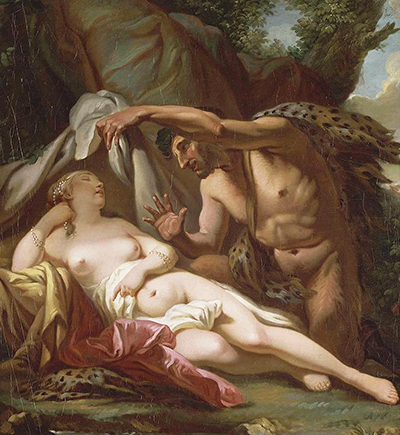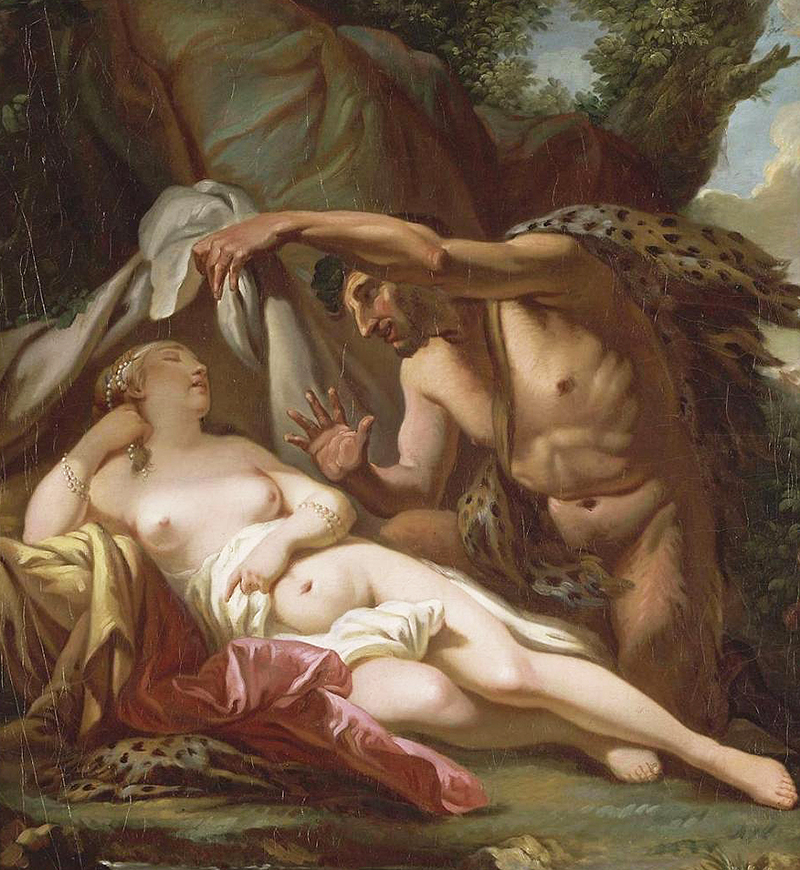Jacques Louis David is believed to have painted Jupiter and Antiope in 1771 whilst in Sens, just South East of capital Paris. He would only have been in his early twenties at that point.
The artwork today remains in the city of Sens, at the Musées de Sens, Sens, France. Efforts have been made in recent years to actually restore the piece to its former glory and it remains one of the highlights to be found in the Museum. At the time of writing, it appears that sufficient funds have been raised in order to complete the first stage of restoration, after a crowd funding appeal across France. It is believed that descendants of Francois Boucher had earlier owned the piece and eventually decided to donate it to this institution. The great Rococo master had taught David for a short period of time before it became aware that their natural styles were too opposed in order to make any partnership worthwhile for either of them. At that point David moved on to seek training elsewhere but it would be wrong to say that they held any personal animosity towards each other.
One of the purposes of the restoration work was to actually allow the public to appreciate a small sketch that was completed on the reverse of this painting. It is a small painted sketch of a maid or other domestic worker and is rumoured to have been inspired by the work of Chardin (see Saying Grace, as an example), who himself was connected to Boucher as well. Specialists on artist David have claimed it to be of particular importance than both sides of this canvas are preserved and studied in equal measure because they both allow us to learn more about the working processes of this young artist, just as he was beginning to develop technically.
At around the same time of David were the French Romancists who pushed new innovations into the French art scene. They had a bolder, more expressive approach which would win them favour with many academics who appreciated this fresh approach, whilst still remaining faithful to the key principles of fine art. One can immediately recall the majestic Liberty Leading the People by Eugene Delacroix, where the French tricolour flag was held aloft in celebratory fashion. There is then the brutal, frightening scene of the Raft of the Medusa from Theodore Gericault that offers a dark seascape scene. David himself actually contributed to this movement himself, via a number of his students who eventually decided to work within this way. That may have reminded himself of how he and his master, Boucher, could not see eye to eye on stylistic decisions, and so had to part ways even though they held a deep respect for each other.





